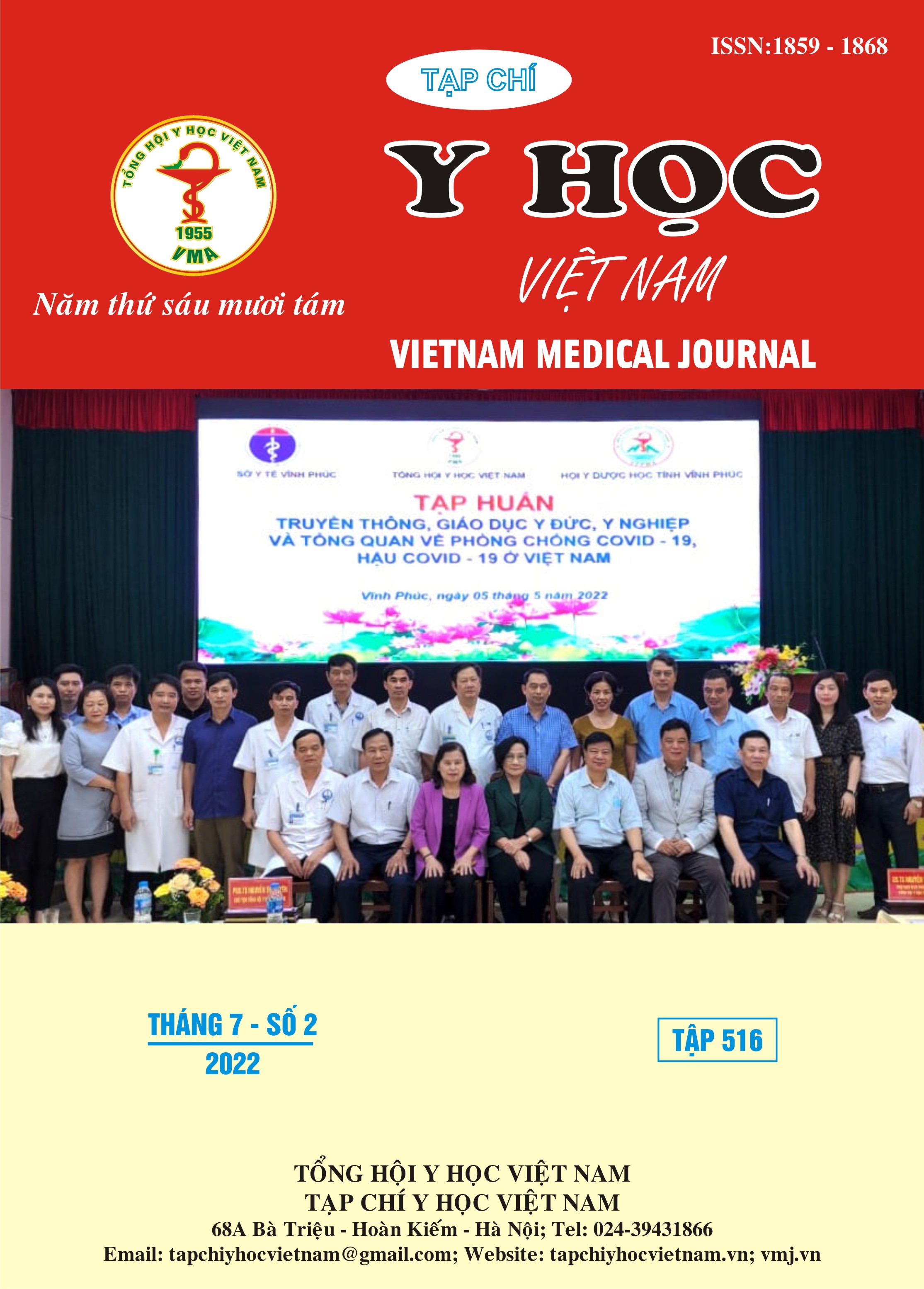RESEARCH OF MRI IMAGING OF NEUROVASCULAR COMPRESSION AND ITS CORRELATION WITH EFFICACY OF TREATMENT BOTULINUM TOXIN IN PRIMARY HEMIFACIAL SPASM’S PATIENTS
Main Article Content
Abstract
Objectives: Description of the MRI-CISS imaging of facial nerve in primary hemifacial spasm’s patients and of the correlation between neurovascular compression with efficacy of treatment botulinum toxin and with Jankovic disability rating scale. Materials and methods: Descriptive study. A total of 58 patients with primary hemifacial spasm were subject to 3D-CISS MRI of facial nerve and were treated by injections of botulinum toxin A (Dysport®) in Tam Anh Hospital from 6/2021 to 5/2022. Results: Fifty-eight patients (11 male, 47 female) were included in the study, the average age of 57,1 ± 10,0 years. T2-CISS revealed vascular compression in 96,6% patients (Grade I: 17,3%, grade II: 56,9%, grade III: 22,4%); 63,8% patients had artery compression or contact at REZ/TZ. The offending vessel was inferior cerebellar artery in 56,9% patients. The ability to achieve good efficacy of treatment of groups who have degree of neurovascular compression grade I and II is 6,329 times higher than that of grade III. Conclusion: We concluded that MRI T2-CISS should be performed in all primary hemifacial spasm’s patients for detection and evaluation of neurovascular compression.
Article Details
Keywords
Hemifacial spasm, neurovascular compression
References
2. Jia JM, Guo H, Huo WJ, et al. Preoperative Evaluation of Patients with Hemifacial Spasm by Three-dimensional Time-of-Flight (3D-TOF) and Three-dimensional Constructive Interference in Steady State (3D-CISS) Sequence. Clin Neuroradiol. Dec 2016;26(4):431-438.
3. Iijima K, Horiguchi K, Yoshimoto Y. Microvascular decompression of the root emerging zone for hemifacial spasm: evaluation by fusion magnetic resonance imaging and technical considerations. Acta Neurochirurgica. 2013;155(5):855-862.
4. Kenney C, Jankovic J. Botulinum toxin in the treatment of blepharospasm and hemifacial spasm. Journal of Neural Transmission. 2008;115(4):585-591.
5. Lefaucheur JP, Ben Daamer N, Sangla S, Le Guerinel C. Diagnosis of primary hemifacial spasm. Neurochirurgie. May 2018;64(2):82-86.
6. Son BC, Ko HC, Choi JG. Hemifacial Spasm Caused by Vascular Compression in the Cisternal Portion of the Facial Nerve: Report of Two Cases with Review of the Literature. Case Rep Neurol Med. 2019; 2019: 8526157.
7. Soulayrol S, Caperan A, Penot-Ragon C, Beaulieu JP, Gastaut JL. Treatments by local injections of botulinum toxin in neurology. Indications and results. Presse Med. Jun 5 1993;22(20):957-63.
8. Tunc T, Cavdar L, Karadag YS, Okuyucu E, Coskun O, Inan LE. Differences in improvement between patients with idiopathic versus neurovascular hemifacial spasm after botulinum toxin treatment. J Clin Neurosci. Mar 2018; 15(3):253-6.


